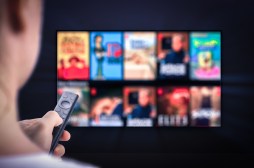The Ultimate Guide to Understanding Dress Codes: Definitions and Examples
In today’s professional world, dress codes play an important role in shaping the image and perception of individuals and organizations. Whether you are attending a job interview, a business meeting, or a social event, it is crucial to understand the different dress codes and adhere to their guidelines. In this ultimate guide, we will explore the definitions of various dress codes and provide examples to help you navigate the world of professional attire with confidence.
Business Formal: Dressing for Success
Business formal is the most conservative dress code commonly seen in corporate settings. This dress code is usually reserved for high-profile events such as award ceremonies, galas, or black-tie affairs. Men are expected to wear a tuxedo or a dark-colored suit with a white shirt and a conservative tie. Women should opt for an elegant evening gown or a tailored suit in dark colors. Accessories should be minimalistic and tasteful.

For example, imagine attending an annual industry awards ceremony where business formal attire is required. Men would typically wear classic black tuxedos with bow ties, while women might choose floor-length gowns in sophisticated colors like navy or burgundy.
Business Professional: Striking the Right Balance
Business professional attire is commonly seen in office environments where employees interact with clients or attend meetings on a regular basis. The goal here is to strike a balance between professionalism and personal style. Men should opt for tailored suits in neutral colors such as navy blue or charcoal gray, paired with collared shirts and conservative ties. Women can choose between pantsuits, knee-length skirts paired with blouses, or tailored dresses that are not too revealing.
For instance, if you have an important client meeting scheduled at your workplace where business professional attire is expected, men could wear well-fitted suits paired with polished shoes while women could opt for tailored pantsuits or knee-length dresses paired with closed-toe heels.
Business Casual: Comfort Meets Professionalism
Business casual is a more relaxed dress code that allows for greater flexibility and comfort while still maintaining a professional appearance. This dress code is commonly seen in creative industries, tech startups, or non-client-facing roles. Men can wear trousers or chinos paired with collared shirts or polo shirts. Blazers are optional but add a touch of sophistication. Women can opt for skirts, dresses, slacks, or tailored pants paired with blouses or sweaters.
For example, imagine working in a creative agency where business casual attire is the norm. Men might choose to wear khaki pants with a button-down shirt and no tie, while women could wear tailored slacks with a blouse and accessorize with statement jewelry.
Casual: Informal Yet Presentable
Casual dress codes are most commonly seen in workplaces that prioritize comfort and flexibility over formality. However, it is important to note that casual attire does not mean sloppy or inappropriate clothing choices. Men can opt for jeans or khakis paired with polo shirts or casual button-downs. Women have the option to wear jeans, skirts, dresses, or leggings paired with casual tops.
For instance, if you work at a tech startup with a casual dress code policy, men might wear jeans with a tucked-in shirt and sneakers while women could opt for jeans paired with a trendy blouse and sandals.
In conclusion, understanding dress codes is essential to making the right impression in professional settings. By familiarizing yourself with the definitions and examples of various dress codes like business formal, business professional, business casual, and casual attire, you can confidently navigate any event while projecting an appropriate image of professionalism and style. Remember to always consider the specific requirements of each occasion to ensure you are dressed appropriately for success.
This text was generated using a large language model, and select text has been reviewed and moderated for purposes such as readability.





